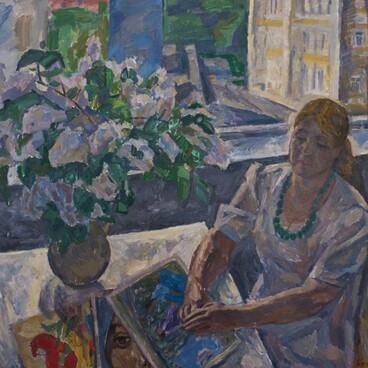The Volzhsky Art Gallery displays a portrait sculpture of a woman by sculptor Gennady Bagramyan. The model for the sculpture was a doctor whose surname was Shuvalova; her name is not known.
Her portrait is cast in bronze. The creation of such sculptures is a laborious process that includes many stages. The first is to prepare a full-size model of the future sculpture. Sometimes, it is made of gypsum, where control points are marked. The gypsum mold becomes a full-scale copy, and the sculptor is guided by it during their work.
Preparing a frame is the key stage in making a bronze sculpture. It is created according to the previously marked areas on the gypsum sample. Then the frame is covered with gypsum, and the sculpture remains empty inside. The master pours wax into the resulting gypsum sample and waits for it to cool down.
The cooled parts are mixed with a specific cold-hardening base, which includes special resin and quartz sand. Gypsum samples on the outside are opened and removed. Molten bronze is poured into the empty areas of the cold-hardening mold, from which all wax was removed. Next, the mold is placed in the oven, where it can fully form.
Many of the sculptor’s works are located in St. Petersburg, for example, the monument to Rene Descartes and the statue of Ivan Pavlov, made in 1989. In 1981, in collaboration with Valentina Rybalko and Nikolay Gordiyevsky, Bagramyan created decorative sculptures for the Lenin Sports and Concert Complex: “Sport” (a young man with a cup) and “Art” (a girl with masks). Gennady Bagramyan died in 2000 in St. Petersburg.
Her portrait is cast in bronze. The creation of such sculptures is a laborious process that includes many stages. The first is to prepare a full-size model of the future sculpture. Sometimes, it is made of gypsum, where control points are marked. The gypsum mold becomes a full-scale copy, and the sculptor is guided by it during their work.
Preparing a frame is the key stage in making a bronze sculpture. It is created according to the previously marked areas on the gypsum sample. Then the frame is covered with gypsum, and the sculpture remains empty inside. The master pours wax into the resulting gypsum sample and waits for it to cool down.
The cooled parts are mixed with a specific cold-hardening base, which includes special resin and quartz sand. Gypsum samples on the outside are opened and removed. Molten bronze is poured into the empty areas of the cold-hardening mold, from which all wax was removed. Next, the mold is placed in the oven, where it can fully form.
Sculptures are usually designed in several separate parts because they are too big and do not fit into the oven. When all the fragments are ready, they are combined. Gas welding is most often used to join the parts, as it is the best method with bronze. In the end, the sculpture is polished to make it look more aesthetically pleasing and last longer.
Sculptor Gennady Bagramyan was born in 1936 in Rostov-on-Don. He taught at the St. Petersburg Academy of Art and Design (formerly known as Vera Mukhina School). The themes of Baghramyan’s work were diverse: he was interested in peace and war, work and recreation, sports and science, everyday life, motherhood, youth.
Many of the sculptor’s works are located in St. Petersburg, for example, the monument to Rene Descartes and the statue of Ivan Pavlov, made in 1989. In 1981, in collaboration with Valentina Rybalko and Nikolay Gordiyevsky, Bagramyan created decorative sculptures for the Lenin Sports and Concert Complex: “Sport” (a young man with a cup) and “Art” (a girl with masks). Gennady Bagramyan died in 2000 in St. Petersburg.

